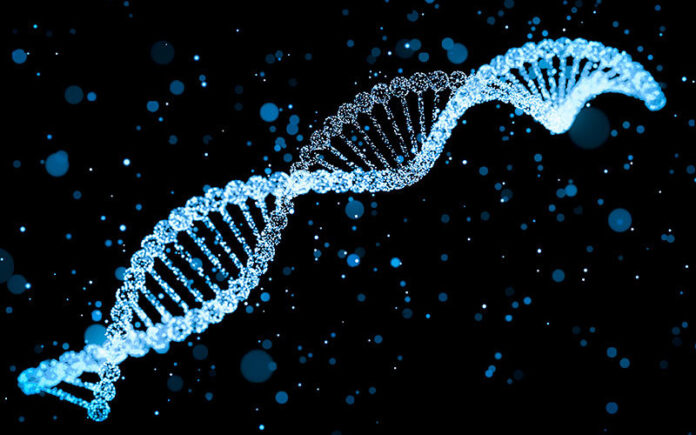Deoxyribonucleic Acid, commonly known as DNA, is a molecule that contains the hereditary orders used in the reproduction, development, growth, and functioning of all identified existing organisms. This complex molecule is present in every living cell, from the tiniest bacteria to the largest mammals. DNA has been the subject of intense scientific research for decades, and its importance in understanding the evolution and diversity of life on Earth cannot be overstated. This article will provide an overview of the appearance and functionality of DNA, its presence in living organisms, how it can be used to prove the theory of evolution, and when the popularity of DNA research began to expand.
What Is the Appearance of DNA?
DNA has a distinctive double helix structure that is instantly recognizable to anyone familiar with the molecule. The double helix consists of two long strands of nucleotides, each compiled of a nitrogenous base, a sugar particle, and a phosphate group. The two strands are intertwined in a spiral pattern, with the nitrogenous bases forming the rungs of the ladder-like structure. The four nitrogenous bases that makeup DNA are Adenine (A), Thymine (T), Guanine (G), and Cytosine (C). These bases pair up in a specific manner, with A always pairing with T, and G always pairing with C. This base pairing is crucial to the functionality of DNA, as it allows for the accurate replication of genetic information during cell division.
What Are the Functionalities and Responsibilities of DNA?
According to MyBioSource, DNA has many different functions and responsibilities within living organisms. Its most important role is to store and transmit genetic information from one generation to the next. This information is encoded in the sequence of nucleotides that make up the DNA molecule. The sequence of nucleotides determines the sequence of amino acids in proteins, which are responsible for carrying out many of the biochemical processes that occur within cells.
In addition to storing genetic information, DNA is also involved in the regulation of gene expression. Gene expression refers to the process by which the information encoded in a gene is used to create a functional protein.
Can DNA Prove the Theory of Evolution?
As per Nature, DNA can provide strong evidence in support of the theory of evolution. One of the key predictions of the theory of evolution is that all living things share a common ancestor. This prediction is supported by the fact that all living organisms share a common genetic code, as well as by the similarities in the structures of many proteins and other molecular components of living cells.
When the Popularity of DNA Expanded?
The study of DNA has been an important part of biology since the molecule was first discovered in the 1950s. However, the popularity of DNA research began to expand rapidly in the 1970s and 1980s, with the development of new techniques for analyzing and manipulating DNA.
The popularity of DNA research continued to grow in the 1990s and 2000s, with the completion of the Human Genome Project and the development of new technologies for studying gene expression and protein function.
Conclusion
This is everything you want to know about DNA. Make sure you let us know if you have any other questions.
Read Also
- Ketamine-Assisted Therapies: Impacts on Employee WellbeingWorkplace stress is common today. Many employees feel tired, anxious, or burned out. Regular therapy can help, but some people need more support. Ketamine-assisted therapy is showing good results for mental health. A ketamine-assisted therapist guides each session safely. This therapy can improve mood, focus, and energy. Learning more about it can help teams stay… Read more: Ketamine-Assisted Therapies: Impacts on Employee Wellbeing
- The Future of Men’s Health: Why Telehealth Is Here to StayTelehealth isn’t just a pandemic trend that faded into the background. For Australian men, it has become one of the most practical, time-saving, and stress-free ways to manage everyday health — and it’s shaping the future of how we access care. Platforms like DOCTO, an Australian online doctor and specialist telehealth service, are leading the… Read more: The Future of Men’s Health: Why Telehealth Is Here to Stay
- How to Build a Simple, Clean Skincare Routine ?You don’t need a complicated skincare routine. It doesn’t have to be something that requires twenty different products and confusing steps. Your routine works well with just a few high-quality clean ingredients. The beauty industry keeps pushing more products, but your skin actually needs less. You only need a simple approach to get better results… Read more: How to Build a Simple, Clean Skincare Routine ?
- How Preventive Dental Care Supports Overall HealthHave you ever wondered how a simple dental checkup could impact your entire body? Oral health is more than just a bright smile. Studies show that poor dental habits can contribute to serious health problems. Gum disease and tooth decay are linked to heart disease, diabetes, and infections. Yet, many people overlook preventive dental care.… Read more: How Preventive Dental Care Supports Overall Health
- Seeing Clearly in a High-Tech World: A Deep Dive into Advanced Vision Care ServicesProtecting your eyesight isn’t optional—it’s essential. Modern eye care has evolved far beyond basic exams, offering advanced diagnostics, personalized treatments, and surgical innovations that keep vision sharp for life. A leading example is Intermountain Eye Center, home to specialists like Dr Fishburn Boise, where patients receive comprehensive, high-level vision care designed to preserve long-term eye… Read more: Seeing Clearly in a High-Tech World: A Deep Dive into Advanced Vision Care Services






